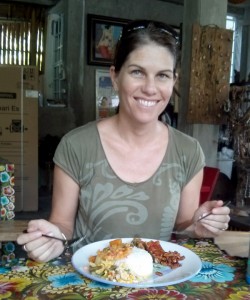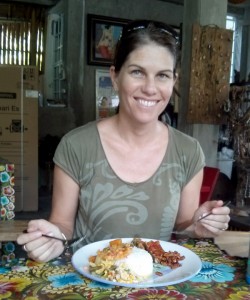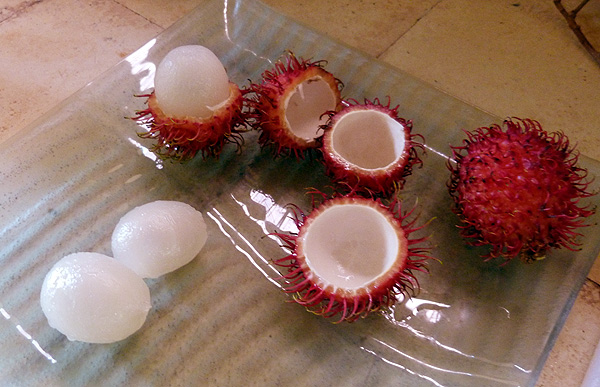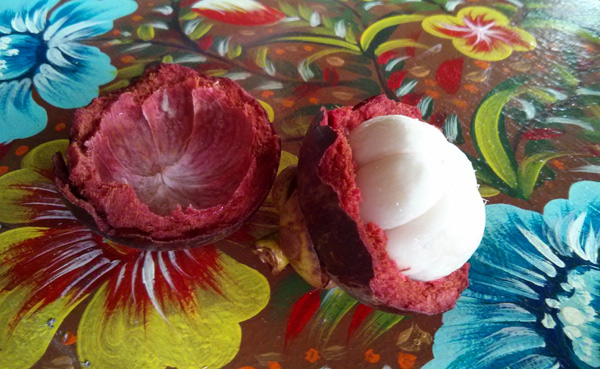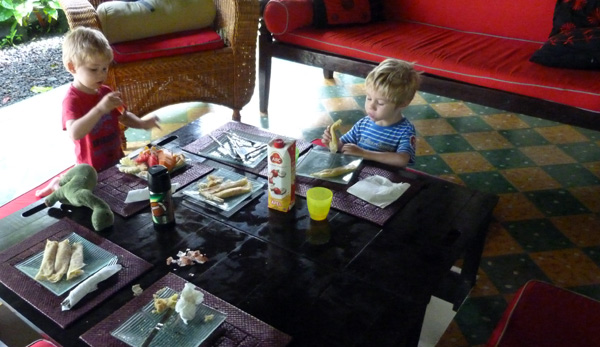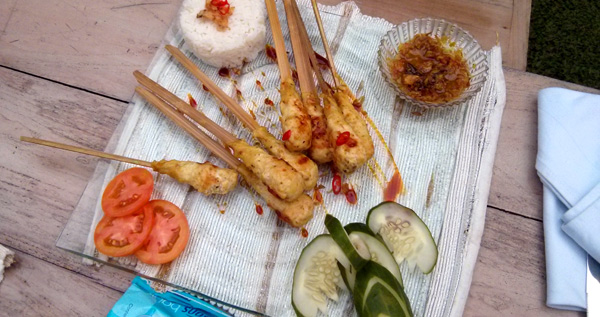As expected, our diet while living as ex-pats in Bali has changed significantly from back home in Australia.
From a dietitian’s perspective, the change in diet is both good and bad. The positive aspect is that we are exposed to such a huge array of different and amazing foods, that it broadens the range of food that we can eat. The not so good part is that it takes time for us (especially the kids) to adjust to the new eating habits, and particularly the different flavours and spices, creating challenges to find food that everyone will eat.
One factor that influences what we eat is the price. Generally, most things are cheaper, but some are a lot more expensive. If you eat local foods, of course, these are inexpensive, but if you want to eat western foods, many of them are imported and are often more expensive than they are back in Australia. I saw a small (220g ) jar of Vegemite for about $13 in a supermarket! Cheese is also double the price, so a quick snack of Vegemite and cheese on toast has become a luxury item! Our standard breakfast has become less of a routine too, as cereal like muesli and Weetbix is very expensive to buy.
I rarely cook for the family anymore. To cook a meal with the limited and sometimes expensive ingredients that are available, it turns out similar in price as eating out – actually fractionally cheaper but without the added hassle of cooking and cleaning up – it is definitely easier to eat out. We have so many options, home delivery (which the majority of restaurants do free of charge, to anywhere in Ubud), eating out at restaurants or warungs, and we can also get the staff here to cook for us. This frees up a lot of our time for relaxing, as it should be in Bali. On the occasions that I do cook, it is done to encourage greater consumption of vegetables … I’m not actually sure that’s working though!
One of the things we love about travelling in this region is the abundance and range of tropical fruit: like watermelon, pineapple, papaya (or paw paw), rambutans, mangosteens, mangos, coconuts, avocados…most of these are cheap as they are locally grown.
Jetson has become a great fan of rambutans and mangosteens, but we are yet to convert the two-year-old Casper. Coconut is available on all warung menus as a refreshing (and rehydrating) drink. Last time we were here we paid a guy a dollar to climb a tree to get one for us. Fresh as it gets.
There is a giant passionfruit vine growing just outside our villa, with hundreds of fruit on it. The locals are not big fans of it, as they taste a bit tart, but I collect some every other day to add to my cereal or eat as a snack on their own, or sometimes with yoghurt. Delicious!
Dairy cows do not cope well in the tropics, so fresh dairy food is hard to come by, and if you do find some, it’s usually not cheap. The most challenging aspect of this for us is that there is no truly fresh milk, it is all long life – even when the packet says fresh milk. We are gradually getting used to drinking UHT milk, but it is nowhere near as good as fresh especially in our coffee and tea. There has also been rationing of cheese – which we ate so much of at home – due to the cost This is rather disturbing for Casper as he loves his cheese!
If we eat meat, it is mostly chicken, but we are generally eating less meat and more eggs. At our current villa, we have breakfast cooked for us every morning, and we can choose from eggs any way or pancakes, with fruit. Olive misses this as she goes to school before they come around, but the boys love their eggs in the morning!
Pork and fish are also available meats, but beef is not common and can be quite expensive. In fact, beef mince is more expensive ($10/kg) than fresh tuna steaks at $9/kg. This can be turned into a positive, as it’s encouraging a higher fish intake for all.
The vegetables we get with our meals lack a little variety, usually serving green beans, water spinach, and carrot in cooked dishes, or tomato and cucumber as fresh garnish! These are the local and more available options. There is a good range of other imported vegetables at the supermarket, but the local range is cheaper and tastier. The imported veggies are a tad bland, or rather more variable in quality and taste, and are highly-priced, so not as appealing to purchase. This also limits our variety a bit.
On the whole, aside from the initially slightly poor nutritional intake from increased takeaway eating, I think the experience of living amongst a rich, vast and totally different food culture is broadening our tastes and giving us experiences that we may otherwise never have. It’s all for the better!

